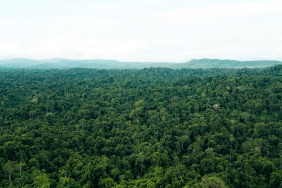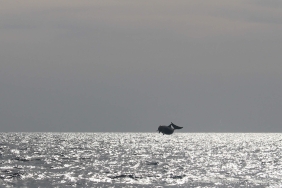DEVELOPING RENEWABLE ENERGY
By Jati Andrianto
The main problem with electricity in Indonesia is not just tariffs, but rather the adequacy of supply. In Indonesia, electricity demand growth is the fastest in Southeast Asia. Until 2016, the increase in electricity consumption demand is expected to reach an average of 7-9%.
In order to meet demand, various efforts have been made, including the construction of the 10 thousand MW project. However, one of the weaknesses of the 10 thousand MW electricity project is that most of them are still coal-fired steam power plants (PLTU).
Several years ago, this effort was indeed a solution to rising prices and the depletion of fuel oil (BBM) supplies. However, it is no longer relevant for current conditions. Because coal has become the fuel for the majority of industries in various countries, the supply for domestic power plants has become reduced and difficult to fulfill.
Moreover, the price given by PIJV for coal contracts is not competitive when compared to the prices offered by other industry players, both domestic and foreign, especially India and China. Our coal products are indeed more fluttering (profitable) in the market abroad than domestically.
Sleeping Giant
There is actually still a space that can be utilized to increase electricity supply in Indonesia. That is renewable energy, which can be one of the right answers to the various limitations of electricity supply in the country. There are at least five types of renewable energy in Indonesia that can be utilized to the fullest, namely geothermal, hydro energy, biomass, wind energy, and solar energy.
Regarding the potential of renewable energy, data shows that Indone- (sia is very likely to develop these natural resources. Geothermal reserves in Indonesia are the highest in Southeast Asia, with estimates at 27 points with a total electrical capacity of up to 27 Gigawatts (GW). Hydro energy, especially in Central and Eastern Indonesia has a total capacity of about 20 GW.
Biomass, which is waste from most industries, also has great potential as well as a solution. The geographical area of Indonesia's coast along 81 thousand km also has enormous wind energy potential. Likewise with solar energy.
Unfortunately, all of that is still a potential that remains ""stored"", and untapped. The government has not given serious attention to this abundant renewable energy. In the 10,000 MW phase D project, which according to the plan will be completed in 2015, most of the power plants are still allocated for PLTU. Meanwhile, power plants fueled by renewable energy are only focused on geothermal, hydropower, and solar power.
In terms of cost, PLTU is indeed more economical than renewable energy-fueled power plants. In addition, in terms of the price of electricity per kWh, in aggregate, the price of electricity from PLTU for each kWh is cheaper than the renewable energy mentioned above.
However, when various direct costs, especially coal transportation and weather constraints, are included in the calculation of the cost per kWh, the price is relatively balanced.
It's just that there is a problem that often arises related to investment in renewable energy, namely licensing. For geothermal projects, for example, it takes four years just for the license alone. This is what makes investors reluctant to enter the geothermal business. Even though in terms of interest, there are not a few investors who are ready to pour funds of more than US $ 1 billion to work on geothermal energy < br />
Roadmap for Climate Change
From a pure business calculation, renewable energy development is indeed profitable. The problem is that many parties, including the government, have not actually realized the benefits of renewable energy
In addition to the advantages of the business side, there are potential hidden advantages of the renewable energy business. The advantage is that power plants that use renewable energy do not cause carbon emissions.
According to the Kyoto Protocol agreement, carbon credits will only be recognized until the end of 2012. However, many parties believe that the failure to extend the acquisition of carbon credits in the Clean Development Mechanism (CDM) scheme at the Climate Change Summit in Copenhagen, Denmark, some time ago, will be corrected at this year's Climate Change Summit.
This is all inseparable from the global economic conditions that have been relatively much improved compared to 2009. Thus, developed countries will only prepare their funds to buy carbon credits produced by various industries, especially from developing countries.
More than anything else, the development of renewable energy is also in accordance with the climate change roadmap that was issued by the government some time ago. Although the climate change roadmap still has various weak gaps, including renewable energy development in the government program will be very relevant to the policies of various countries in the world on climate change.
So, it is clear that doing business in order to reduce the impact of climate change is no longer a burden on the company's financial performance (costcenter), but instead provides benefits that can be very large in number (profit center).
The author is strategic and development director of Karbon Advisory





